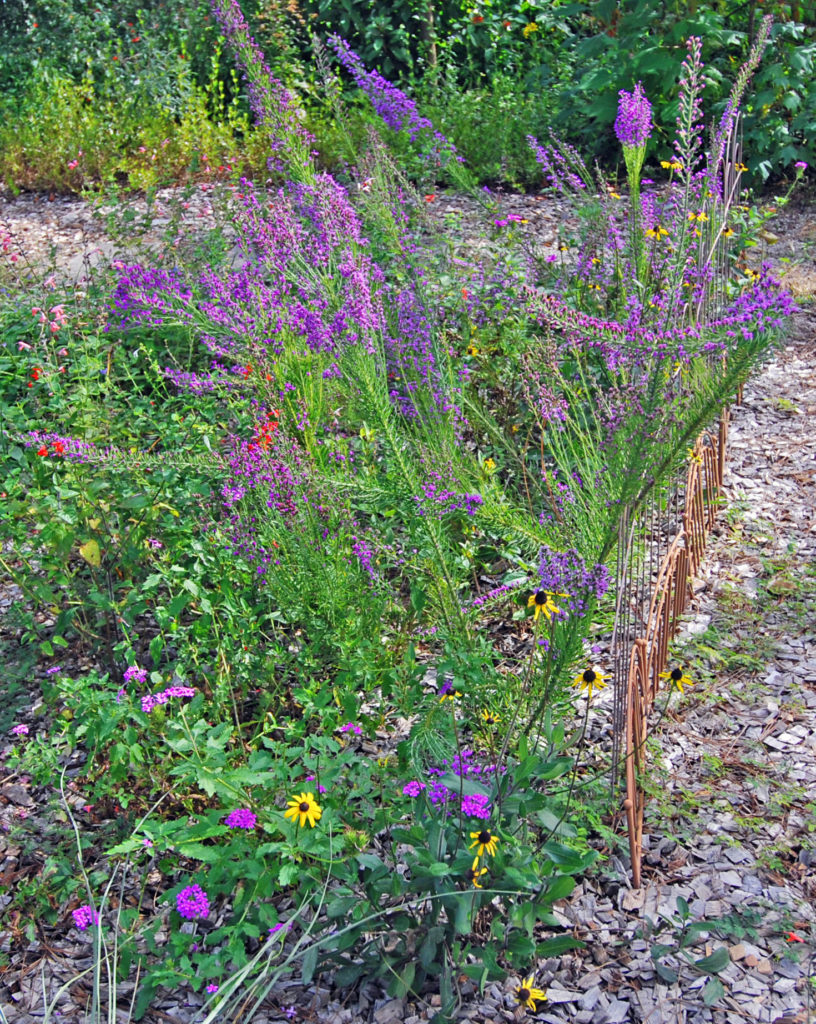
Blazing Star
Liatris gracilis
Graceful Blazing Star, Liatris gracilis is our most adaptable species for home use. This is found nearly throughout Florida and is also known as Slender Gayfeather. This is a real treat to come across during a walk in the woods in late summer and fall.
It is usually found in pine flatwoods and can tolerate short periods of flooding. A slight amount of moisture in the soil is best for this Blazing Star, although irrigation is not usually needed.
The spikes of purple blooms shoot up to two or more feet tall in the fall and last for several weeks. It will die back to the enlarged root and disappear for the winter. Look for grassy foliage in the spring and mulch around it.
Try mixing with Mimosa, Beach Verbena, Blackeye Susan, Salvia, Love Grass, Coreopsis species, Rattlesnake Master, Wild Petunia, Twinflower, Lopsided Indian Grass, Silky Aster and Florida Spiderlily.
Although this is my favorite species of Blazing Star, there are others that might do better in extreme sites. These include Dense Blazing Star, Liatris spicata, which grows in wet prairies. This is often found in the marl prairies of Everglades National Park. The long rubbery grass like leaves make a nice border and the flowers are spectacular.
This species blooms in the late summer and fall. It mixes well with Silkgrass, Pityopsis graminifolia, which has yellow blooms at the same time and is under 12 inches tall. Try the same mix as with Graceful Blazing Star. Unfortunately, Dense Blazing Star does not come back in the spring on my property. Maybe you can be more successful.
Shortleaf Blazingstar, Liatris tenuifolia, is the third species that I have grown. It naturally grows in dry pinelands and scrub throughout Florida. It, too, tends to die out after blooming in late summer, yet is still beautiful enough to use as an annual. If your soil is naturally dry, such as near and east of I95, you may find this a good choice.
For more information about Graceful Blazing Star click here, and Dense Blazing Star click here. And finally Shortleaf Blazingstar click here.
Did I mention that all the Blazing Stars are favorites of bees and other pollinators?